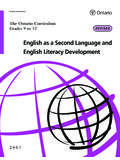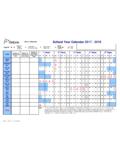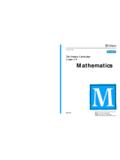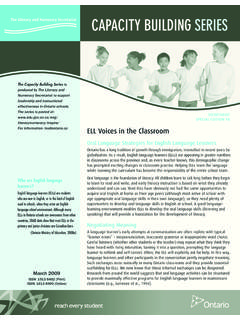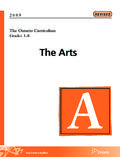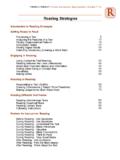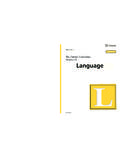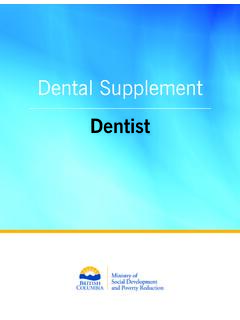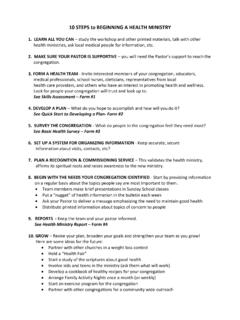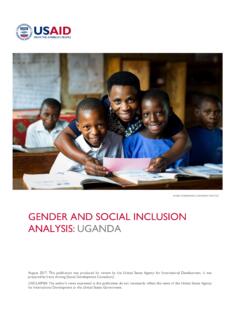Transcription of The Ontario Curriculum, Grades 9 and 10 ... - Ministry of …
1 Ministry of EducationThe Ontario CurriculumGrades 9 and 102006R VIS REVISEDP rinted on recycled paperISBN 1-4249-0902-3 (Print)ISBN 1-4249-0903-1 (TXT)ISBN 1-4249-0904-X (PDF)05-006 Queen s Printer for Ontario , 2006 Guidance andCareer EducationContentsIntroduction ..3 Secondary Schools for the Twenty-First Century ..3 The Place of Guidance and Career Education in the Curriculum ..3 Roles and Responsibilities in Guidance and Career Education ..5 The Program in Guidance and Career Education ..7 Overview of the Program ..7 Curriculum Expectations ..9 Strands .. 10 Assessment and Evaluation of Student Achievement .. 12 Basic Considerations .. 12 Achievement Chart for Guidance and Career Education .. 13 Evaluation and Reporting of Student Achievement.
2 18 Reporting on Demonstrated Learning Skills .. 18 Some Considerations for Program Planning in Guidance and Career Education .. 19 Teaching Approaches .. 19 Planning for Experiential Learning and Cooperative Education .. 19 Planning Program Pathways and Programs Leading to a Specialist High-Skills Major .. 20 Planning Guidance and Career Education Programs for Students With Special Education Needs .. 20 English as a Second Language and English Literacy Development (ESL/ELD) .. 22 Antidiscrimination Education in Guidance and Career Education .. 23 Literacy, Numeracy, and Inquiry/Research Skills .. 23 The Ontario Skills Passport and Essential Skills .. 24 The Role of Technology in Guidance and Career Education .. 25 Health and Safety in Guidance and Career Education.
3 25 Une publication quivalente est disponible en fran ais sous letitre suivant : Le curriculum de l Ontario , 9eet 10eann e Orientation et formation au cheminement de carri re, publication is available on the Ministry of Education website at Ontario CURRICULUM, Grades 9 AND 10: GUIDANCE AND CAREER EDUCATIONC oursesLearning Strategies 1: Skills for Success in Secondary School,Grade 9, Open (GLS1O, GLE1O, GLE2O) ..27 Career Studies, Grade 10, Open (GLC2O) ..33 Discovering the Workplace, Grade 10, Open (GLD2O) ..38 Glossary ..463 IntroductionThis document replaces The Ontario Curriculum, Grades 9 and 10: Guidance and CareerEducation, 1999and the sections of The Ontario Curriculum: Guidance and Career Education,Open Courses (Draft), Grades 10 and 12, 2004that pertain to Grade 10.
4 Beginning inSeptember 2006, all Grade 9 and 10 guidance and career education courses will be based on expectations outlined in the present Schools for the Twenty-First CenturyThe goal of Ontario secondary schools is to support high-quality learning while giving indi-vidual students the opportunity to choose programs that suit their skills and Ontario curriculum, in combination with a broader range of learning options outsidetraditional classroom instruction, will enable students to better customize their high school education and improve their prospects for success in school and in Place of Guidance and Career Education in the Curriculum The guidance and career education program plays a central role in secondary school by provid-ing students with the tools they need for success in school, in the workplace, and in their dailylives.
5 In particular, the curriculum focuses on skill development that will help students bettermanage their time, resources, and dealings with other people to improve their opportunities forsuccess both in school and in their future lives. Courses in guidance and career education activelyinvolve students in research, inquiry, problem-solving, and decision-making processes related toplanning for postsecondary education, training, or guidance and career educationprogram is designed to recognize the diverse abilities, strengths, and aspirations of all students,providing them with knowledge and skills that will be benefit them throughout their goals of the guidance and career education curriculum are to enable students to: understandconcepts related to lifelong learning, interpersonal relationships, and career planning; developlearning skills, social skills, a sense of social responsibility, and the ability to formulateand pursue educational and career goals.
6 Applythis learning to their lives and work in the school and the goals are organized into three areas of knowledge and skills:student development,interper-sonal development, and career development, as outlined in Choices Into Action: Guidance and CareerEducation Program Policy for Ontario Elementary and Secondary Schools, guidance and career education program aims to help students become more confident,more motivated, and more effective learners. Students learn how to identify and assess theirown competencies, characteristics, and explore a broad range of optionsrelated to learning, work, and community involvement through a variety of school and experi-ential learning opportunities. Students develop learning and employability skills and strategies4 THE Ontario CURRICULUM, Grades 9 AND 10: GUIDANCE AND CAREER EDUCATION that they can apply in their secondary and postsecondary studies and in the and develop essential skills and work habits that are required for success in the work-place, as well as skills needed for effective communication, teamwork, and leadership.
7 In theirguidance and career education courses, students learn about the changing nature of work andtrends affecting the workplace, and gain insights into the challenges and opportunities theywill encounter in the modern curriculum allows for opportunities for studentsto practise the skills they are developing in both school and community contexts and tobecome aware of the importance of contributing to their they learn about the career-planning process, students set goals for postsecondary educationand work and develop the knowledge and skills they need to achieve those programhelps prepare students for a changing world by demonstrating that a career is not just an occu-pational destination but also a journey that involves lifelong learning. It also teaches them torecognize and create opportunities, make informed choices, and pursue their personal andcareer goals more the guidance and career education program, students learn to manage the varioustransitions they will be making in the course of their lives, starting with their next major transition, from secondary school to postsecondary education or training, and work.
8 Studentsprepare for a world that will demand adaptability and resourcefulness by developing the per-sonal knowledge and skills they will need to navigate the future confidently and in all disciplines of the secondary school curriculum share some responsibility fordeveloping students learning skills, interpersonal skills, and knowledge and skills related tocareer planning. In guidance and career education, however, these three areas of developmentare at the centre of the curriculum and are taught explicitly. Students relate what they arelearning in various subjects in their secondary school program to their personal aspirations and interests and to possible work and life roles. Awareness of these connections increases thepersonal relevance of the curriculum for students and, hence, their motivation to learn and toset and pursue educational and career secondary school guidance and career education curriculum builds on the work begun in the elementary program in the three interconnected areas of development learning, inter-personal skills, and career planning.
9 As Choices Into Action, 1999makes clear, growth in theseareas is an ongoing process that continues from Kindergarten to Grade 12 and throughout both the elementary and secondary school programs, students acquire knowledge and skillsthat help them to become responsible and contributing members of communities, workplaces,families, and peer groups; to turn learning into a lifelong enterprise; and to create and preparefor futures that include meaningful, productive roles in work, personal life, and the Grade 7 to Grade 12, all students develop and complete an annual education school guidance and career education curriculum supports this process by teachingstudents the knowledge and skills they need to complete their annual education plans success-fully. (Further information about the annual education plan can be found in Choices IntoAction, 1999.)
10 5 INTRODUCTIONR oles and Responsibilities in Guidance and Career Education have many responsibilities with regard to their learning in school. Studentswho make the effort required to succeed in school and who apply themselves will soon discoverthat there is a direct relationship between this effort and their achievement, and will thereforebe more motivated to will be some students, however, who will find it more diffi-cult to take responsibility for their learning because of special challenges they face. For thesestudents, the attention, patience, and encouragement of teachers can be extremely importantfactors for success. However, taking responsibility for one s progress and learning is an impor-tant part of education for all students, regardless of their of concepts and skills in guidance and career education requires a sincere commitmentto work, study, and the development of appropriate skills.

